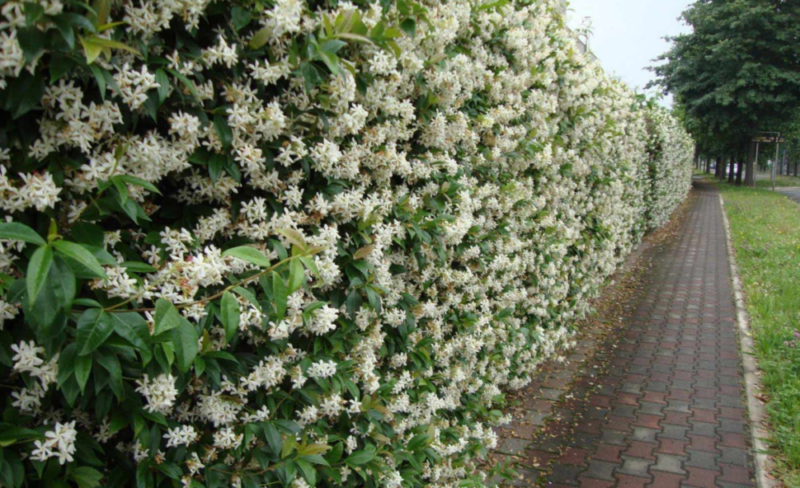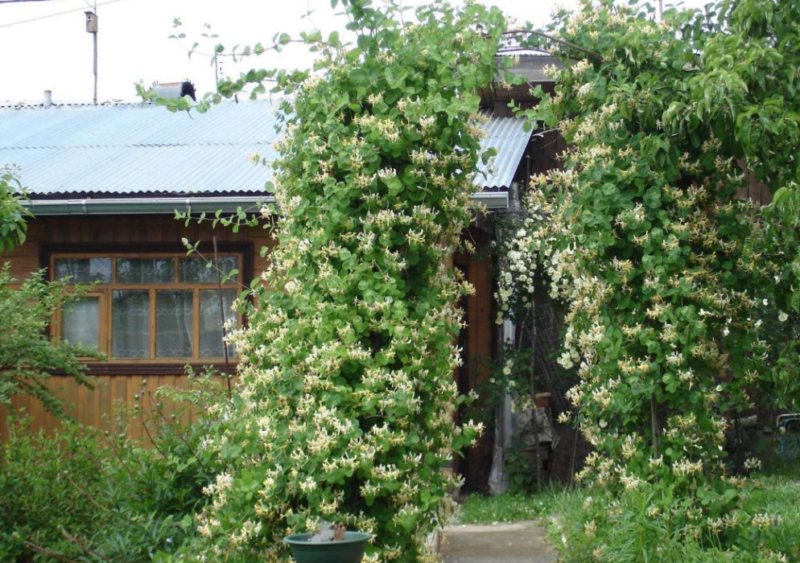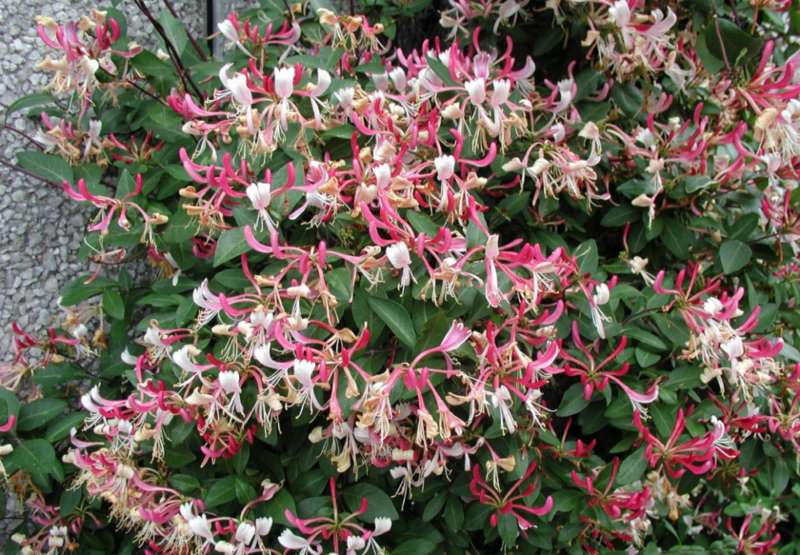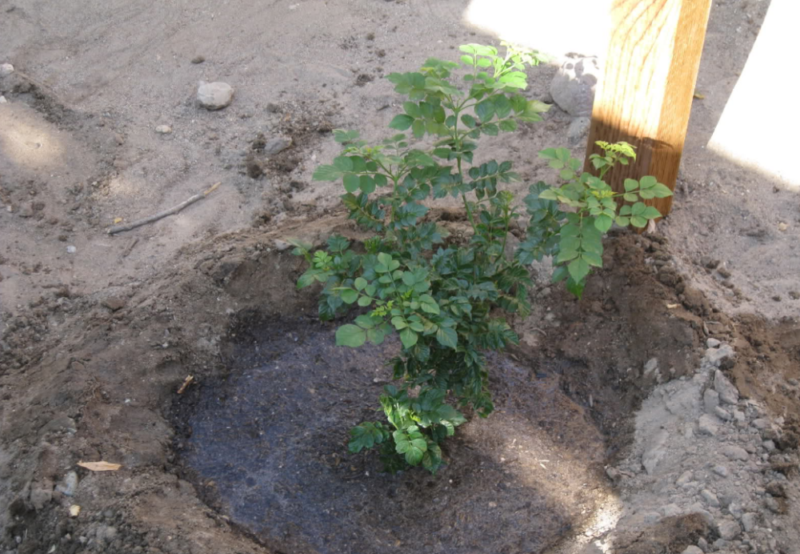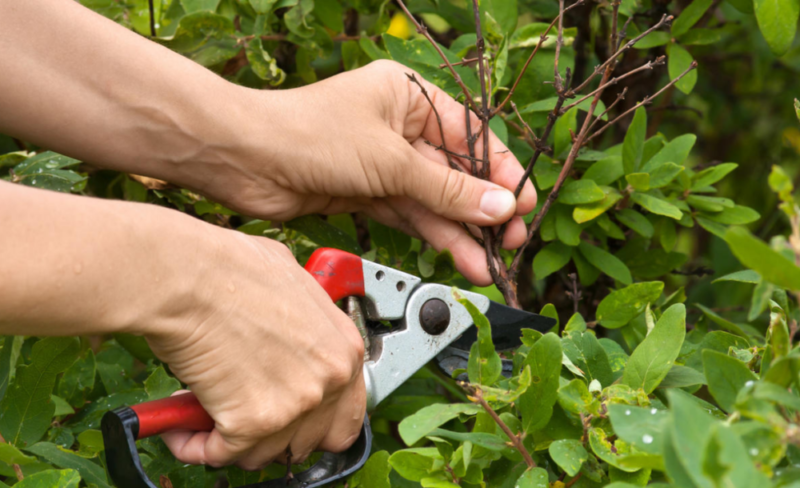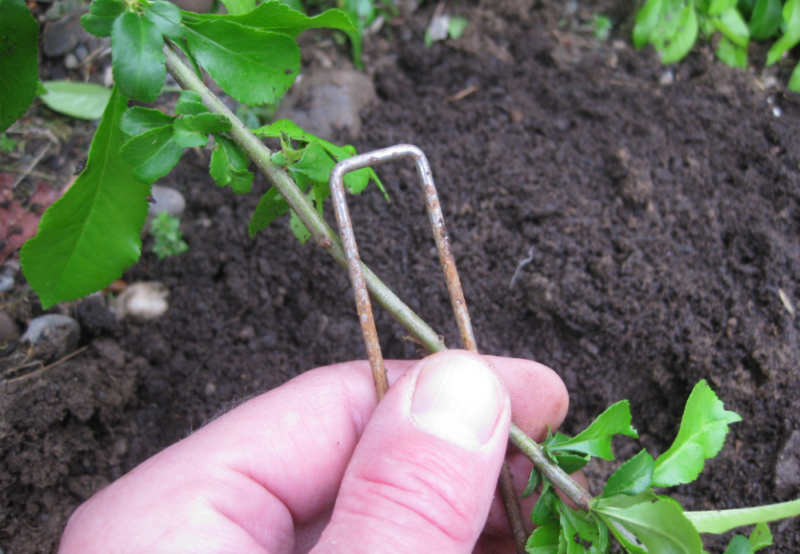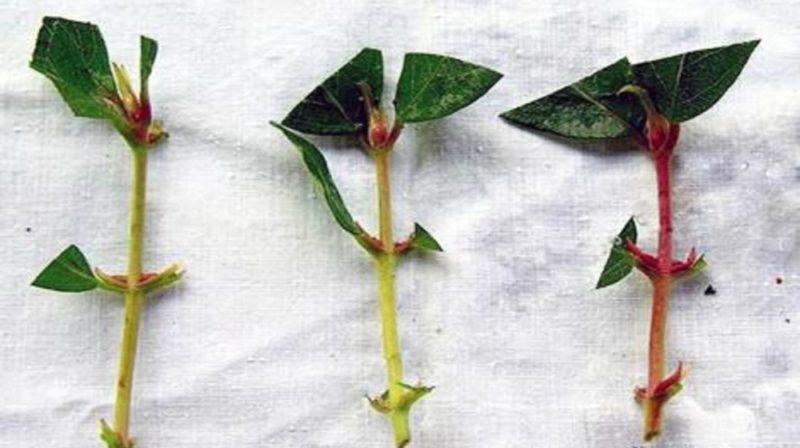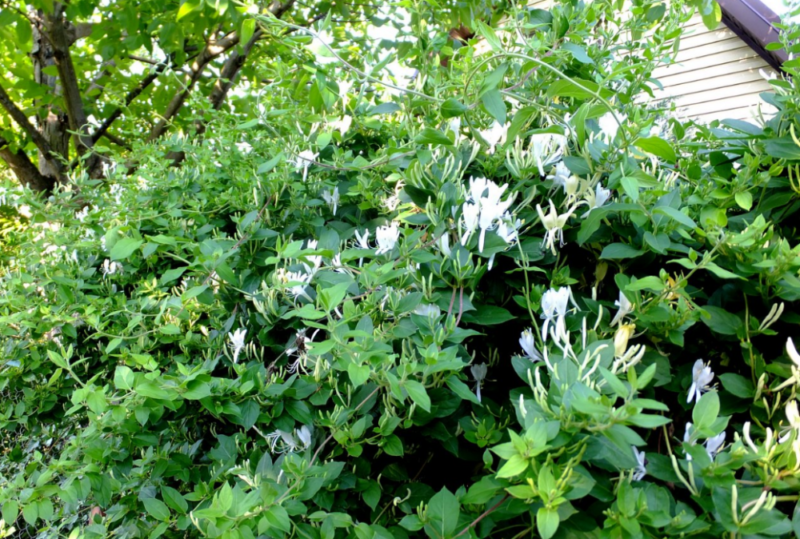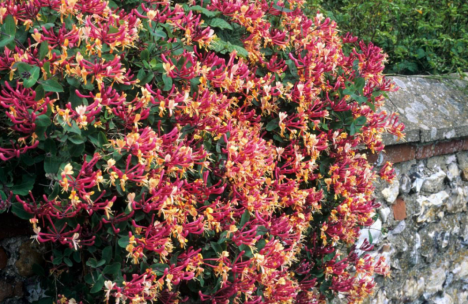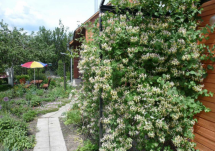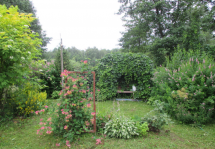Each summer resident wants to decorate his garden in an interesting and unusual way. The best option for the decor is curly honeysuckle. The plant is developing rapidly and unpretentious in care, which makes it an indispensable element of any landscape design.
Material Content:
View description
Honeysuckle is a winding shrub.
The first references to it in Russian directories date back to the 18th century. And it became more widespread already at the beginning of the 20th century.
Honeysuckle grows to 4-5 m in length. Inflorescences reach a diameter of 5 cm. Gardeners love the plant for rapid growth. It is mainly planted in the southern and central regions of the Russian Federation, since this species is not able to survive Siberian frosts.
The shrub has many positive characteristics:
- Resistant to drought.
- It does not require constant feeding.
- It reproduces well.
- Blooms for a long time.
- Has strong intensively growing shoots.
- Rarely sick.
During the fruiting period, red berries appear that are not suitable for food.
Varieties of Honeysuckle Curly
There are many varieties of this plant. When landing, all of them need additional supports in the form of walls, fences, supports, garden compositions.
Most Popular:
- Honeysuckle climbing Serotina. This ornamental shrub reaches 4-5 m in length, adding about a meter each year. Maroon buds are combined in inflorescences (about 30 pcs.). Blooming flowers of dark raspberry color with a yellowish core.
- Honeysuckle "Honeysuckle". The shrub can grow up to 8 m in height. The color of flowers collected in 3 inflorescences at the end of the branch varies from red to yellow.The fruit is a juicy coral berry.
- Honeysuckle Tatar. The crown of this species can reach 2.5 m in diameter. The height of the plant is about 3 m. The leaves are oblong with sharp tips. Flowers are arranged in groups and have different shades: pink, light raspberry, white.
- Honeysuckle Korolkova. Shrub height - 3 m. Crochet openwork. Leaves are light green with a slight bluish bloom. It attracts attention with bright fruits.
- Giralda Honeysuckle. Shrub reaches 6 m in height. White buds during blooming are very fragrant. Foliage is dark green, decorative.
Growing requirements
The plant does not require special care. It is better to choose a place for landing sunny. Almost all species tolerate shade, but in this case, abundant flowering should not be expected. The soil can be of any type. If the soil is sandy, then under the plant you can pour organic fertilizer.
Planting is done by seeds or seedlings. The first option is quite complicated. Therefore, the second method is most often used.
Seedlings must be purchased only at specialized horticultural centers, nurseries or shops. The age of the cuttings should be at least 2-3 years.
The root system and branches are needed intact with the obligatory presence of kidneys.
It is advisable to stock up several copies at once, so that at least one of them takes root.
Outdoor landing
You need to plant the plant on the south side of the site. It is better to sprinkle too acidic soil with lime. Previously, the landing site must be dug up to remove the old roots.
Now the most popular seedlings in closed containers. Their root system is protected, so you can plant a plant in spring and autumn. But the best time is mid-spring.
Saplings with bare roots are planted only in autumn - during leaf fall.
Decorative honeysuckle is placed in a hole measuring 45-50 cm, which is prepared 5-7 days before planting. The distance between the bushes is up to 3.5 m. In order to make a green wall, it is enough to plant plants a meter apart. The bottom of the recess must be covered with broken brick and fertilizer. In the form of the latter, a compost bucket with 60 g of superphosphate and 50 g of ash is used. Planting material is not too deeply buried and must be watered. In order to ensure lush flowering of the bush, it must be cut to half length.
Agricultural technology plant care
In the first few months, the bush must be regularly watered. In hot weather, the top should be sprayed with water. Further, irrigation is performed as the soil dries. If it rains heavily, then there is no need for watering. In dry periods, moistening and loosening are mandatory.
After 2 years, you can start feeding. In spring, humus is used, in autumn - ash. In summer, honeysuckle is fertilized with a solution of nitrophosphate.
In order to avoid diseases, before the summer period, the plant is treated with a Bordeaux mixture. And during colds - with a urea solution (5%).
Do not forget about pruning, which is carried out at any time of the year. But preference is given to the autumn (during leaf fall) or the spring period (after the awakening of the kidneys). The elimination of dried and diseased branches is carried out constantly. Optionally, you can shorten the shoots, giving the bush a certain shape.
The main circumcision is carried out after cold weather so as not to damage the plant. For rejuvenation, only a few shoots are left, cutting the rest at the very base. It is impossible to prune the bush strongly. Otherwise, it may not bloom, and restoration will take several years. Therefore, it is better to perform a rejuvenation operation in several stages.
In addition, the ovaries are removed after flowering. Berries, despite their inedibility, are left. They are the visiting card of honeysuckle and give the appearance of the garden a special chic. In addition, when they are completely cut off, the branches can begin intensive growth.
Breeding methods
Reproduction, as well as growing honeysuckle, is not difficult.There are several traditional ways.
Propagation by layering
At the beginning of summer, the best and strong shoots are selected.
- They prepare a place, dig it up, loosen it.
- They make a pit with a depth of 4-5 cm and a length of 1-1.5 m.
- They bend the shoot to it, fix it and fill it with soil.
- Then they abundantly watered, mulch the earth, build support for it, so that the vines go up them.
At the end of summer, a small bush should form from each bud. Then they can be planted in their places.
Seed propagation
The method is not easy. Usually only breeders deal with it. After all, this is one of the ways to obtain new plant forms.
But it can be organized at home.
- For this, it is necessary to collect the fruits, remove seeds from them, wash and dry.
- Distribute the material on paper rolls and store until winter.
- In January, it is planted in moist sand and sent to the refrigerator, regularly moisturizing. There they are until April.
- Then the seeds are planted in containers and wait for seedlings, which should be carefully looked after.
The first plants are planted after 2 years.
Propagation by cuttings
The easiest method. Gardeners use it most often. Only cuttings should not be green. They are cut from the middle of the shoot up to 15 cm long. Do this in the fall. In spring, it can be planted in tilled soil, so that the kidney is above the ground. For several weeks, each stalk is covered with a plastic bag, watered and loosened. A year later they are suitable for landing.
Protection against diseases and pests
The bush is rarely sick and does not respond to pest attacks. Especially if he was provided with proper care. But sometimes there are fungal and phytoviral diseases. Most often they occur in wet weather. Powdery mildew, cerosporosis, rust can affect the plant. The presence of these ailments can be determined by the condition of the foliage. Its color becomes pale, white spots appear. Honeysuckle should be treated with biological or chemical preparations, depending on the nature of the disease.
The most dangerous pests are aphids, ticks, scale insects and whiteflies.
If the bush is not badly damaged, then there are enough natural products: garlic, tobacco, pepper tincture. With severe defeat, chemical solutions such as Actellik, Aktara save.
Honeysuckle in landscape design
Many gardeners choose this plant for its ability to grow rapidly in any territory, including shady areas. With proper cropping, you can create any shape to decorate the area. In most cases, landscaping using this bush is not limited only to the garden plot. They decorate arbors, terraces, walls of houses, creating bizarre compositions and green hedges. The shrub is great for decorating alleys and framing the pond.
Different varieties are allowed for planting, differing in size and nature of flowering. Even being next to each other, they look harmonious. Honeysuckle looks picturesque in the company of coniferous shrubs and roses.
This climbing plant conquers with its lush flowering, elegant shape and delicate aroma. It is unpretentious in care, but at the same time it is able to quickly give any garden an unusual and sophisticated look.


